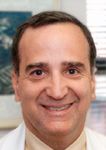- Acne
- Actinic Keratosis
- Aesthetics
- Alopecia
- Atopic Dermatitis
- Buy-and-Bill
- COVID-19
- Case-Based Roundtable
- Chronic Hand Eczema
- Chronic Spontaneous Urticaria
- Drug Watch
- Eczema
- General Dermatology
- Hidradenitis Suppurativa
- Melasma
- NP and PA
- Pediatric Dermatology
- Pigmentary Disorders
- Practice Management
- Precision Medicine and Biologics
- Prurigo Nodularis
- Psoriasis
- Psoriatic Arthritis
- Rare Disease
- Rosacea
- Skin Cancer
- Vitiligo
- Wound Care
Article
Actinic keratosis responds to lower-dose imiquimod regimen
Recent trial data show that a new lower-dose regimen of imiquimod proves effective in the treatment of actinic keratosis (AK) and allows patients to treat much larger surface areas of clinical as well as subclinical lesions. Study results were recently presented at the 68th Annual Meeting of the American Academy of Dermatology.

Key Points
Miami - Recent trial data show that a new lower-dose regimen of imiquimod proves effective in the treatment of actinic keratosis (AK) and allows patients to treat much larger surface areas of clinical as well as subclinical lesions. Study results were recently presented at the 68th Annual Meeting of the American Academy of Dermatology.

Study details
Patients applied up to two 250 mg packets daily for two cycles, two-week or three-week, separated by a no-treatment interval of two or three weeks, respectively. Efficacy was assessed eight weeks after the final dose.
Results showed that imiquimod 3.75 percent and 2.5 percent applied once daily for a two-week treatment cycle (and separated by a two-week drug holiday) reduced AK lesions by 82 percent and 72 percent, respectively, compared to only 25 percent in patients receiving placebo.
The complete clearance of AK lesions with imiquimod 3.75 percent and 2.5 percent was 36 percent and 31 percent, respectively, compared to 6 percent with placebo. Partial clearance rates were 59 percent and 48 percent with imiquimod 3.75 percent and 2.5 percent, respectively, versus 23 percent with placebo.
The three-week treatment cycle had similar outcomes, with imiquimod 3.75 percent and 2.5 percent achieving an 80 percent and 67 percent reduction of AK lesions, respectively (versus 24 percent with placebo). Imiquimod 3.75 percent and 2.5 percent showed complete clearance of 34 percent and 25 percent of lesions, respectively, versus 6 percent with placebo. Partial clearance rates with imiquimod 3.75 percent and 2.5 percent were 54 percent and 43 percent, compared to only 13 percent with placebo.
Fine-tuning AK therapy
Imiquimod 5 percent is approved by the Food and Drug Administration (FDA) for the treatment of external genital warts, superficial basal cell carcinoma and AKs. According to Dr. Gaspari, the new concentrations of imiquimod are a fine-tuning of an already effective drug.
"Patients now have an optimized way to deliver therapy compared to the 5 percent Aldara (Graceway) cream, allowing them to treat the whole scalp or face, which was previously not possible with the 5 percent imiquimod cream concentration. This is a huge advance, because a wider area can now be treated," Dr. Gaspari says. "You treat a larger surface area in a shorter period of time instead of just treating segments of the face. Patients can now get through the treatment much more quickly."
For the treatment of AKs, the 5 percent imiquimod cream is used for a 16-week treatment applied twice weekly to a 25 cm-square target area, whereas the new concentrations can be applied daily to the entire face or scalp. According to Dr. Gaspari, daily treatments are a major advantage in that patient compliance may be significantly improved.
"Compliance to treatment is likely to increase because patients can much easier adhere to a daily regimen than trying to remember when to apply a twice-a-week treatment protocol," Dr. Gaspari says. "Furthermore, the optimized formulations offer a shorter regimen - four weeks of active treatment versus 16 weeks of active treatment with the 5 percent cream."
Interestingly, study data showed that a decrease in active drug did not translate into a decrease in efficacy. However, there is an equivalent efficacy with imiquimod 5 percent and its new concentrations in terms of reducing the number of lesions, with the major difference that the new concentrations can treat much wider areas at once.
Newsletter
Like what you’re reading? Subscribe to Dermatology Times for weekly updates on therapies, innovations, and real-world practice tips.











